Nonnative weeds are engulfing the ancient breeding grounds of Mono Lake’s California gulls
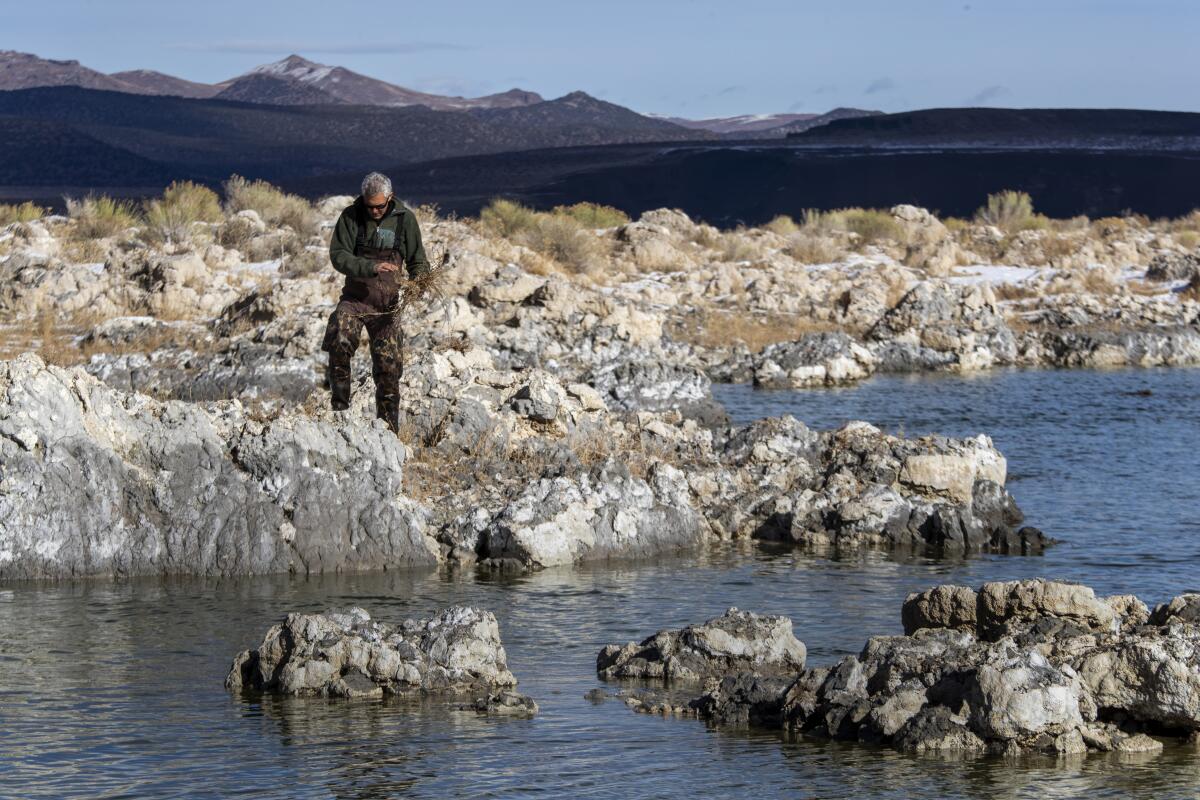
- Share via
MONO LAKE, Calif. — The people who guard the gulls that nest on Mono Lake’s islets in the eastern Sierra Nevada have used dynamite, electric fences and lawsuits to protect the birds from wily coyotes and diversions of water to Los Angeles.
Through it all, California gulls returned each year to rear new generations of their species in roughly 25,000 nests.
Now, the gulls are facing a botanical invader they may not be able to overcome: thickets of invasive weeds that have engulfed most of their breeding grounds.
This year, 11,075 nests were counted, the lowest number recorded over the 34-year course of one of the longest studies of birds in North America. The largest number of gull nests recorded at Mono Lake was about 32,000 in the early 1990s. The number of nests has been in gradual decline since 2004, and in steep decline since 2016, biologists say.
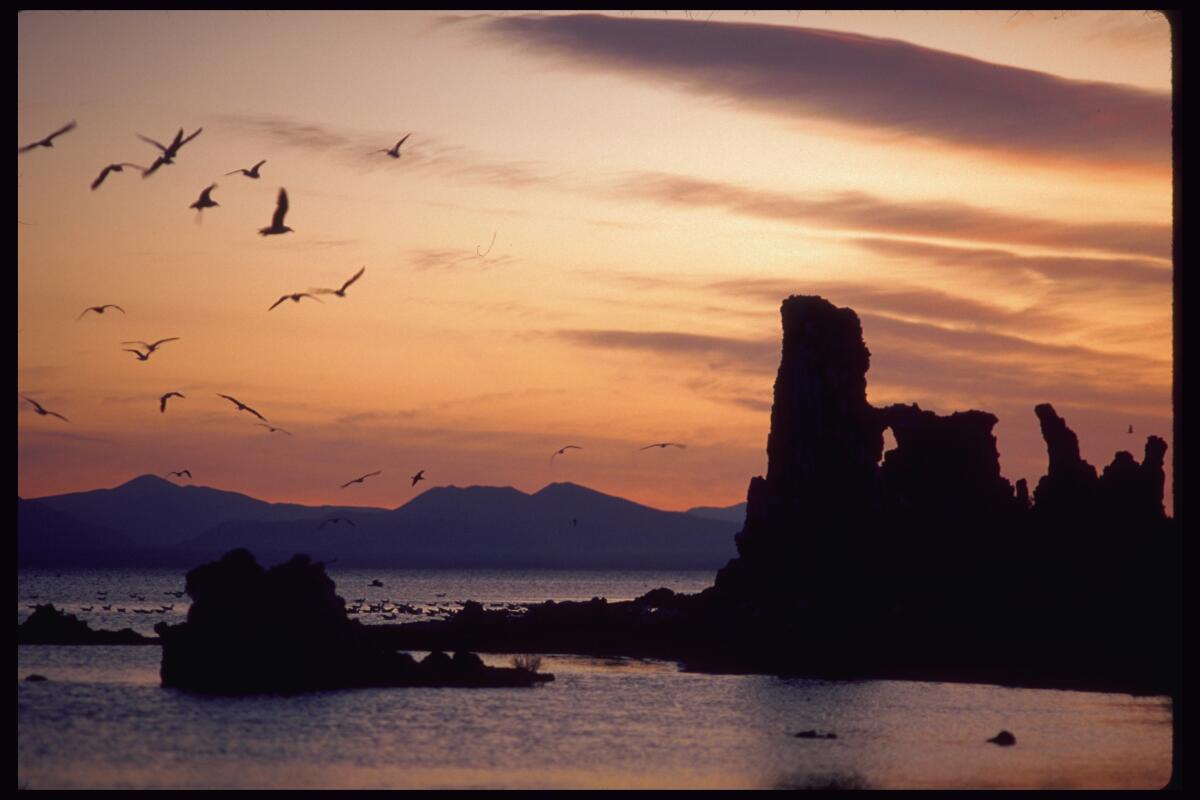
“I’d hate to see this trend continue,” Kristie Nelson, a biologist and expert on the gulls’ breeding habits, said recently. “Every square foot of space out there is precious to these birds.
“We have no idea where the gulls that used to breed at Mono Lake are nesting now, if they are nesting at all,” she added.
The weed-infested islets of Mono Lake are examples of what can happen when a nonnative species gains a foothold on environmentally sensitive isolated islands. In such places, local plants and animals have no room to evade the exponential growth of the interlopers.
The culprit in this case is a bright-green, waist-high Eurasian bush known by the common — and ominous — name fivehorn smotherweed. Although smotherweed is an annual, its spindly spider-like carcasses persist for years.
For reasons that are still unclear, the weed exploded on the islets in 2016, Nelson said, and 70% of the gulls’ once vibrant breeding grounds “are now big nasty patches of weeds casting off thousands of sticky seeds that attach to your shoelaces, shirts and pants.”
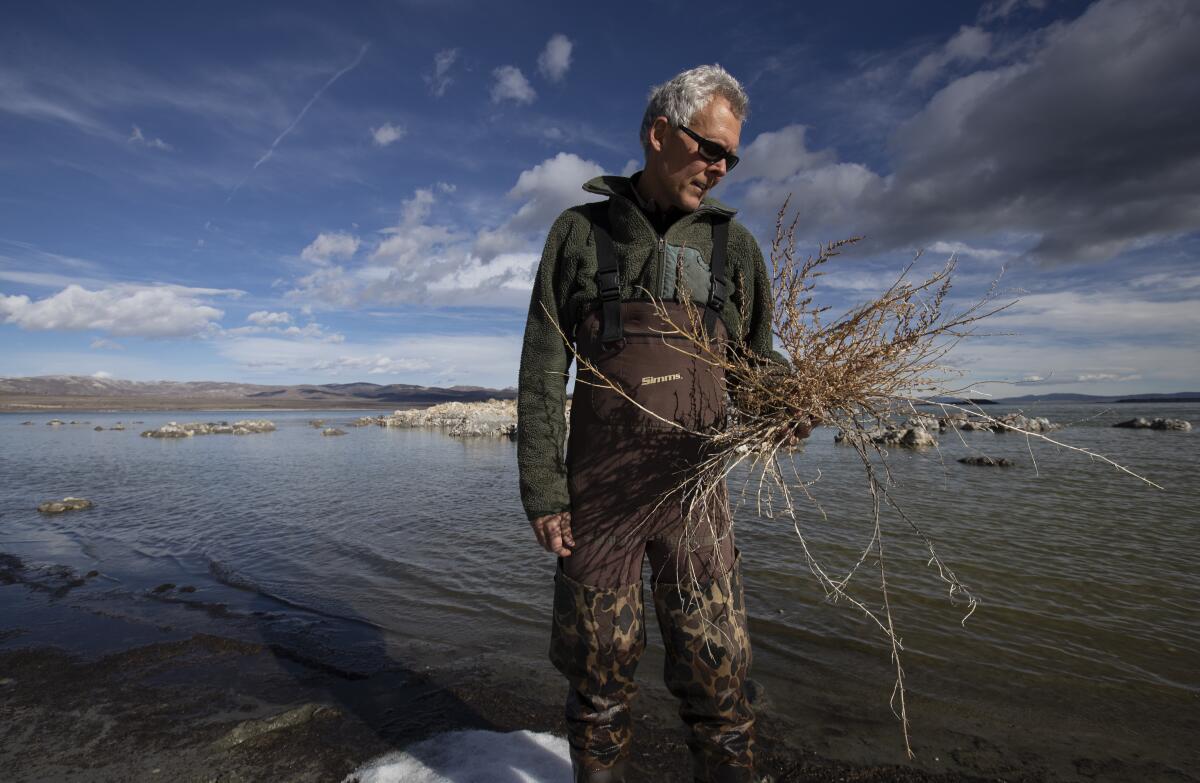
As a low slant of amber sunlight bathed the Mono Basin’s lunarlike landscape Thursday, a group of conservationists scanned the islets through binoculars, taking stock of their options.
“Spraying herbicide is out of the question,” said Geoffrey McQuilkin, executive director of the 16,000-member Mono Lake Committee, a nonprofit group of environmentalists and concerned citizens organized to protect the Mono Basin’s nearly million-year-old ecosystem.
“There are so many sensitive native plants and animals sharing these islets,” he said. “Yanking them out of the ground by hand would be a herculean undertaking — and the results aren’t permanent. That leaves an unprecedented controlled burn operation as our best bet.”
A team of biologists, volunteers and U.S. Forest Service officials has collaborated on plans for limited hand-removal efforts and a controlled burn, but the actions have been postponed for three consecutive years due to the logistical challenges posed by extreme fire seasons, winter storm systems, and a deep snowpack that prevented access to the islets.
In April, as snow begins to melt and weather conditions improve, Mono’s islets officially become off-limits for the five-month nesting season.
To the casual observer, there are few visible signs of the agonizingly complex and decades-long battle to protect the gulls and the ecology of the high desert lake surrounded by bizarre tufa towers at the base of the Sierra’s jagged granite peaks.
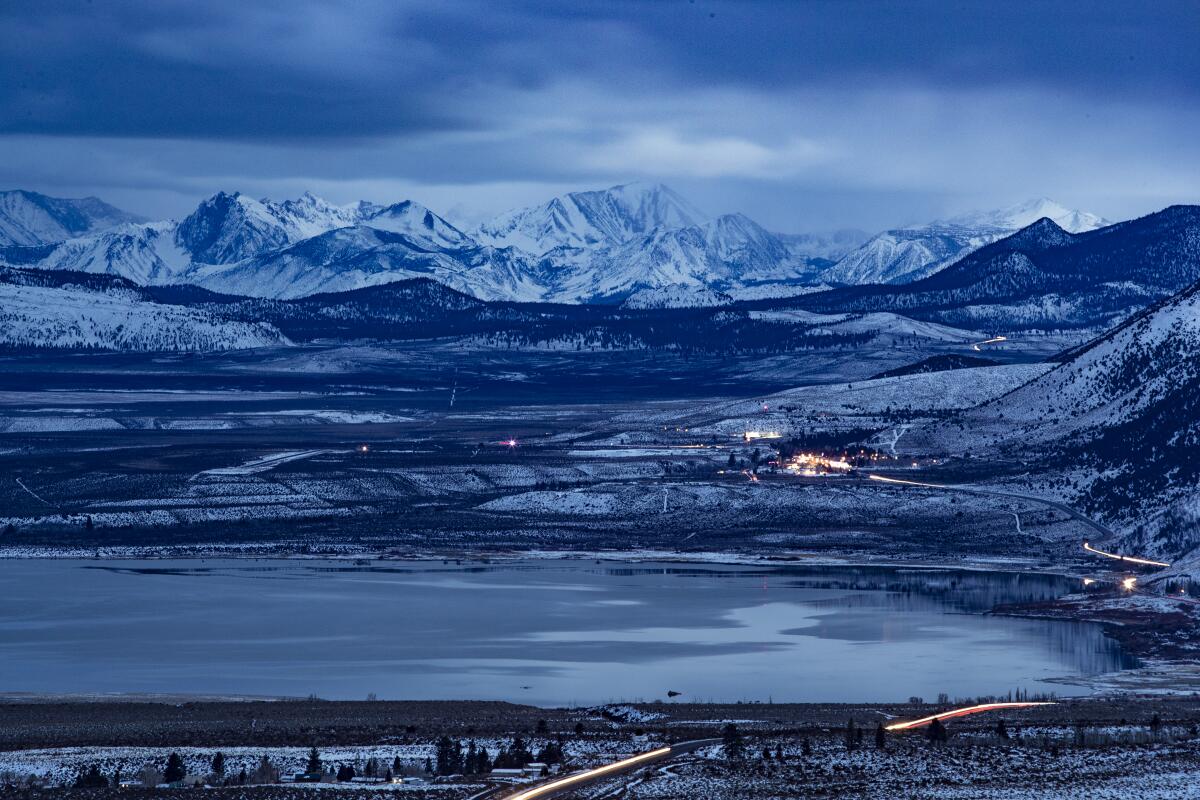
By the late 1970s, the environmental effects of Los Angeles’ World War II-era aqueduct system just east of Yosemite National Park and about 350 miles north of the city were alarming.
Tributary streams dried up. The lake level had dropped more than 40 vertical feet and the water had doubled in salinity, leaving behind smelly salt flats scoured by choking dust storms.
The sex lives of gulls became a hot topic when a declining water level revealed a land bridge connecting a rookery on Negit Island to the shore. This allowed coyotes to pad across and feast on the birds and their offspring.
The California National Guard, with the support of the Audubon Society, tried to blow up the land bridge with dynamite, but the muck exploded sky high and then simply fell back into place.
The U.S. Forest Service in 1990 strung 1,100 yards of low-voltage wire across a portion of Mono’s north shore in hopes a jolt would discourage coyotes from raiding the island rookeries.
But the electronic barrier rapidly degraded in the corrosive alkaline foam and water blowing off the lake.
In 1994, the city of Los Angeles was ordered by state water officials to reduce the quantity of tributary water it had been diverting into the Los Angeles Aqueduct since 1941, ending a legal dispute that had pitted L.A. against the Audubon Society, trout anglers and the Mono Lake Committee.
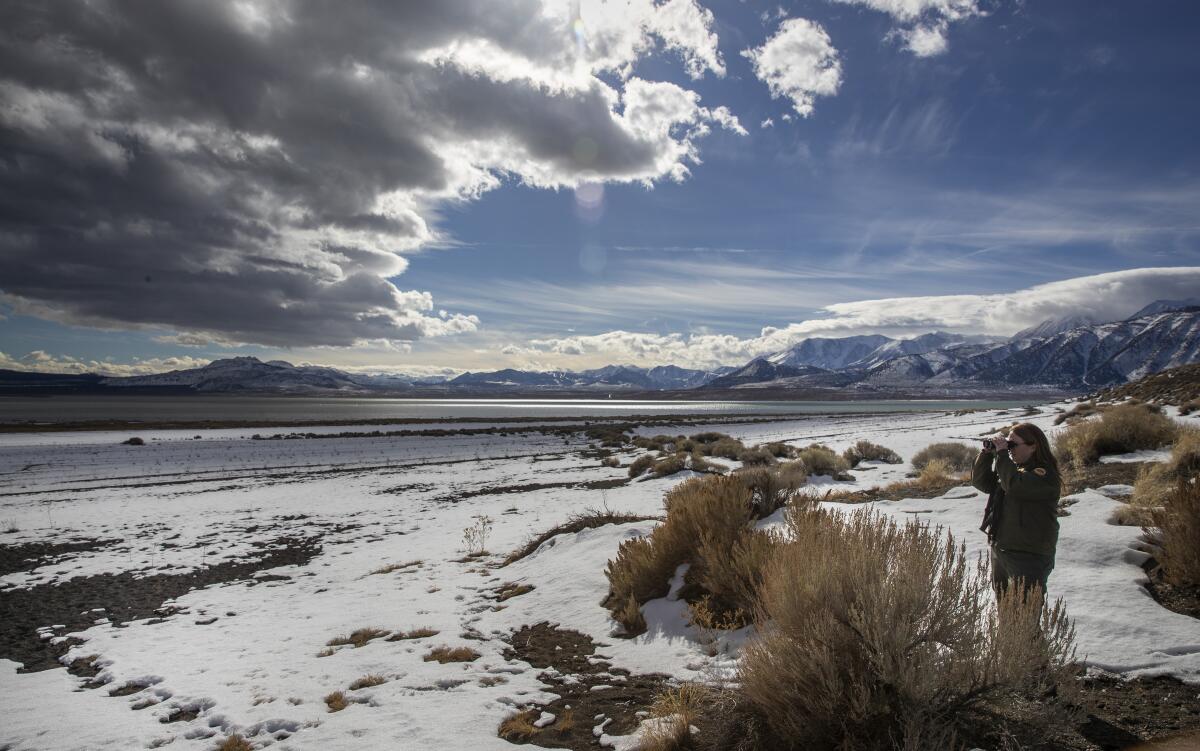
By then, however, the gulls that had nested on Negit Island had decided to fulfill their life cycles instead on the lake’s smaller, more peaceful islets.
Now, conservationists are struggling to devise a viable strategy to restore weed-free zones on the islets for gull colonies.
“Protecting Mono Lake has taken decades of creative dedicated citizen action,” said McQuilkin, the Mono Lake Committee director. “The challenge now is to make sure California gulls can safely nest where they have for centuries.”
More to Read
Sign up for Essential California
The most important California stories and recommendations in your inbox every morning.
You may occasionally receive promotional content from the Los Angeles Times.












